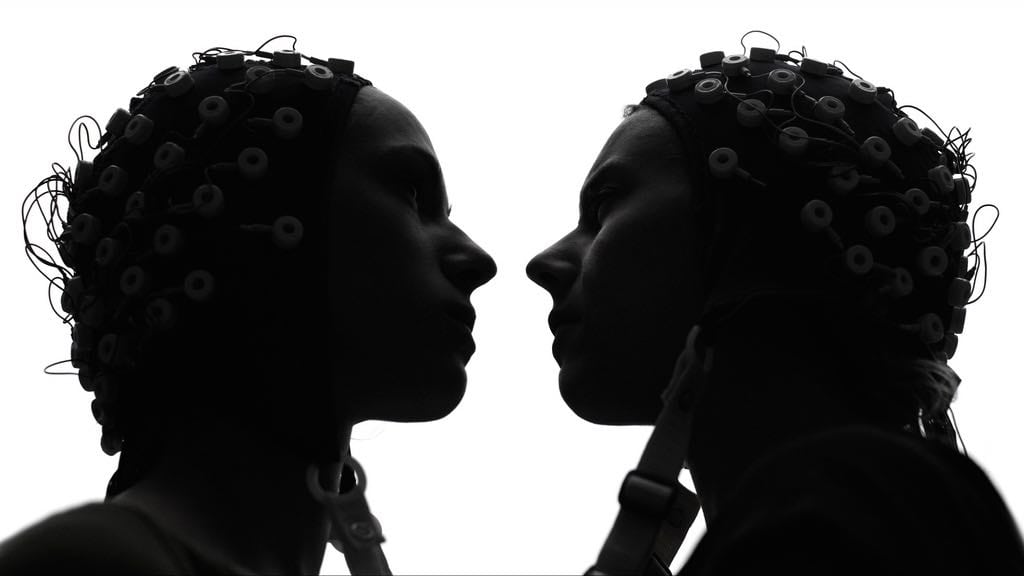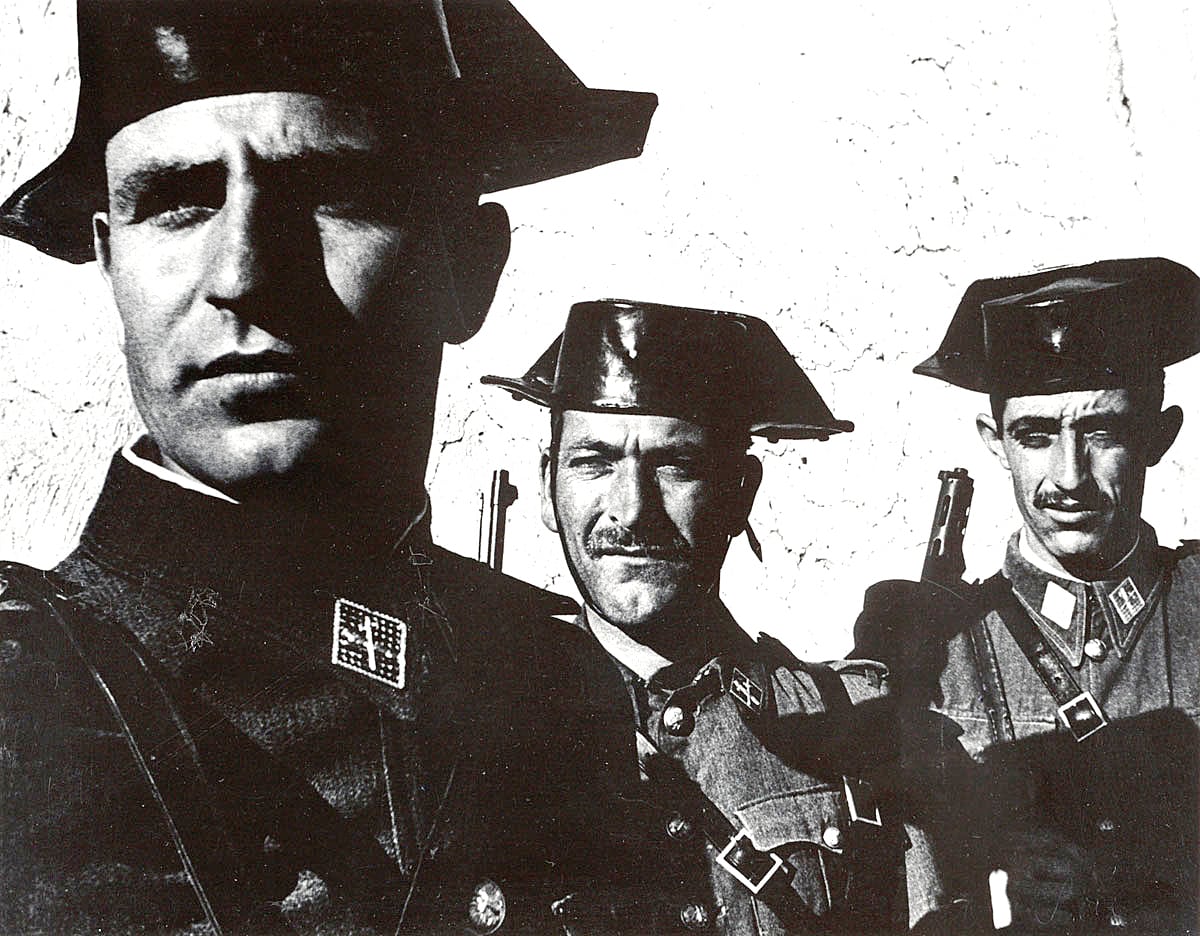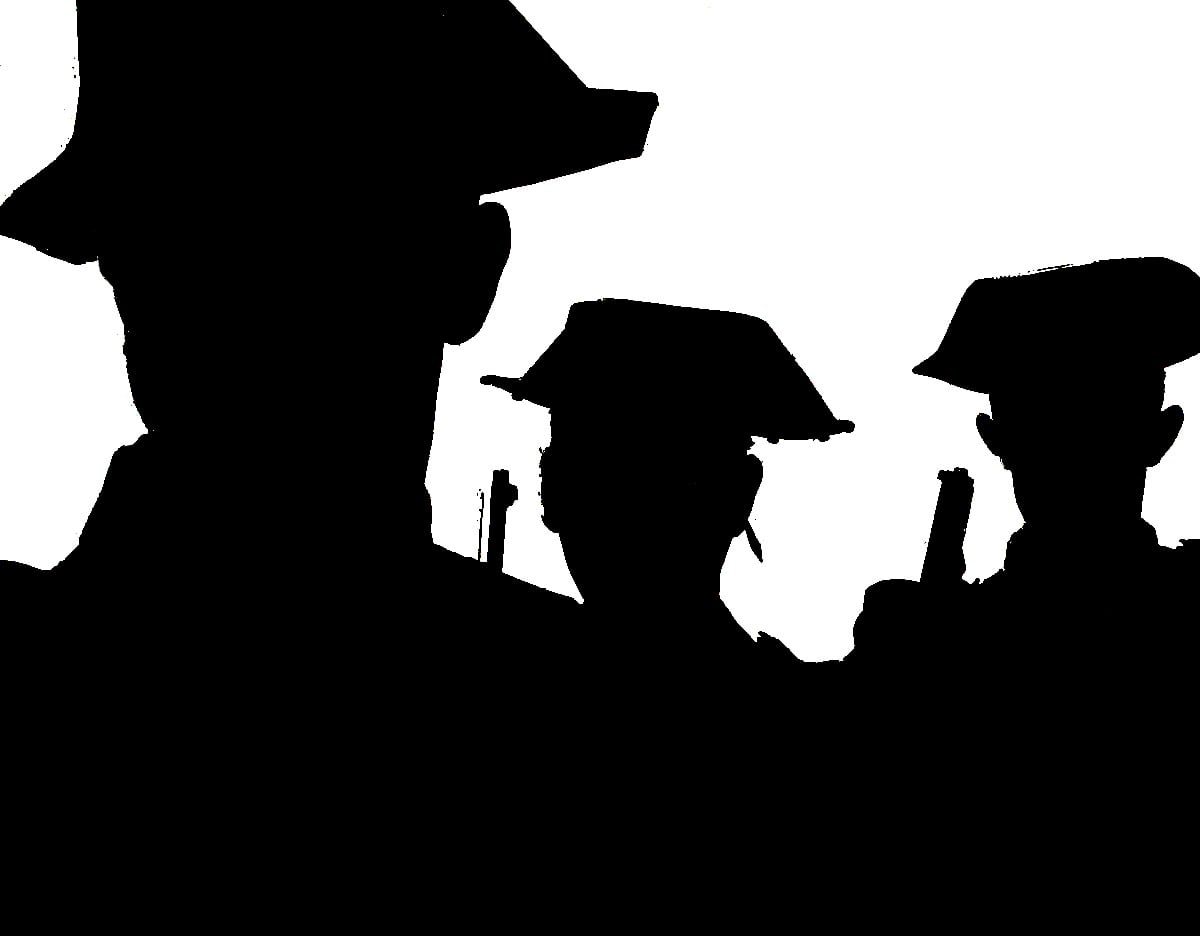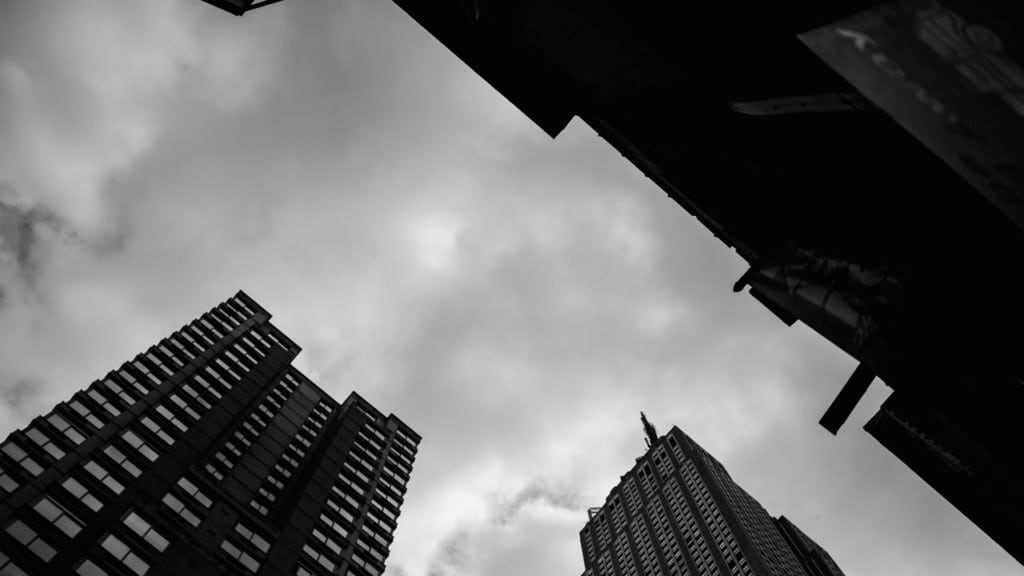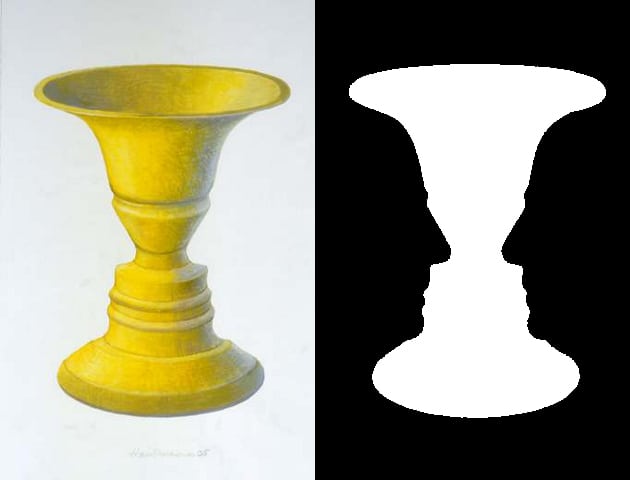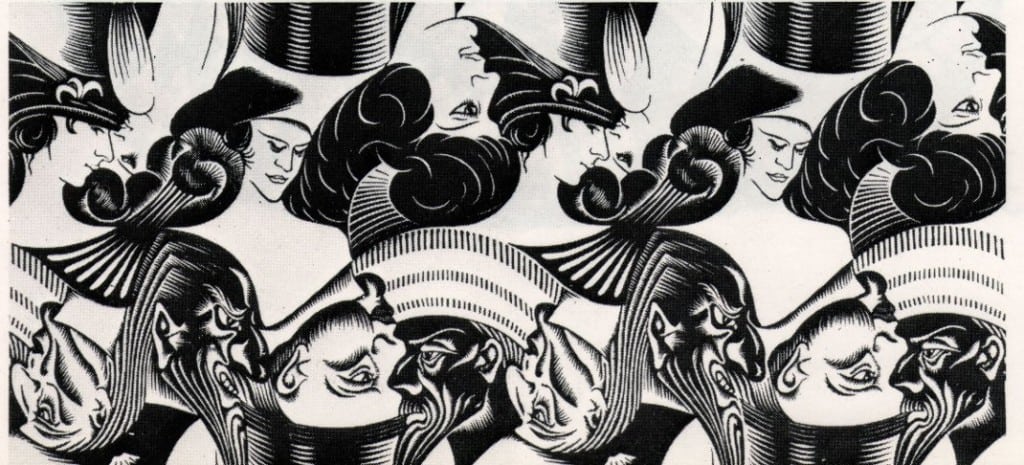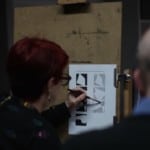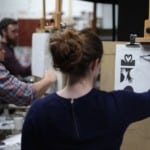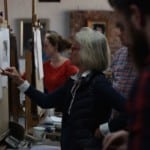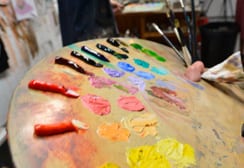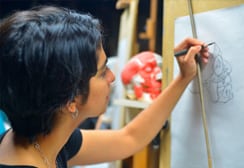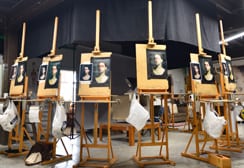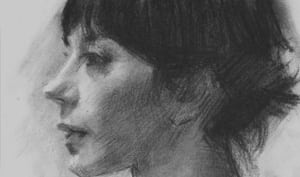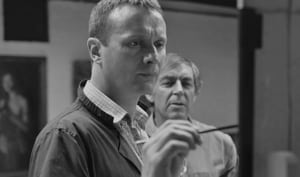The aim of the lesson to place equal importance on Positive and Negative shapes. Positive and negative shapes are interdependent like the pieces of a jigsaw puzzle. For example when drawing the eye it’s tempting to just look at the eye itself without considering the space around it.
What is Positive and Negative Space?
Simply put, positive space is best described as the areas in a work of art that are the subjects, or areas of interest. Negative space is area around the subjects, or areas of interest.
In this lesson we looked at the different aspects of Positive and negative space. Framing, abstraction, figure ground reversal and tessellation and how these elements relate to portraiture.
Framing, the frame is used as compositional element, bounding the negative space which also defines the subject.
Abstraction, note the main focus is on the negative space between the buildings creating an strong abstract composition.
Positive as Negative Space and Vice versa. In this exercise the intention is to Blure the distinction between positive and negative space. Rubin’s Vase is an optical illusion in which the negative space around the vase forms the silhouettes of two faces in profile, a well-known example of figure-ground reversal.
If you are seeing a vase, then you are seeing the white area as the positive space. The black areas become the negative space. If you are seeing faces, then you are seeing the black areas as the positive space, and the white area as the negative space.
Tessellation. A tessellation is a collection of interdependant shapes called tiles that fit together without gaps or overlaps to cover the mathematical plane. The Dutch graphic artist M.C. Escher became famous for his tessellations in which the individual tiles are recognisable motif such as birds and fish.
The students are working on some of the exercises offered in the lesson designed to teach the students the interdependence of positive and negative space.


